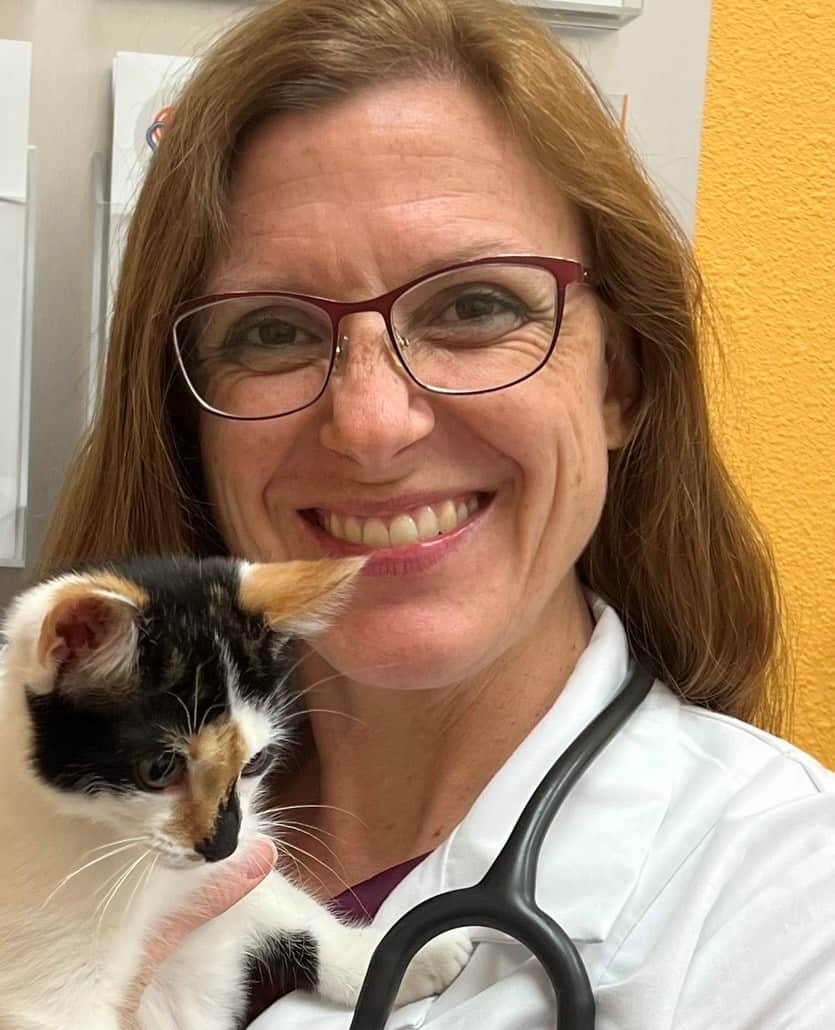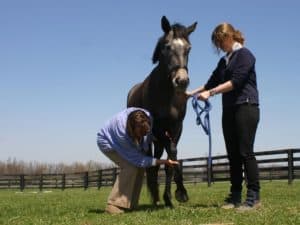Manage Lameness With Vet and Farrier Collaboration

When presented with a horse with performance issues, evaluating the feet is a key factor in assessing and preventing lameness. Therefore, it is important for veterinarians and farriers to work together when managing lameness cases.
“Even if a horse presents for some other reason, you’ll always want to address the podiatry problem as well,” said Richard (Dick) Mansmann, VMD, PhD, Hon. Dipl. ACVIM-LA, owner of Equine Podiatry and Rehabilitation Mobile Practice, in Chapel Hill, North Carolina, during the Northeast Association of Equine Practitioners Convention, held Sept. 21-24, 2022, in Saratoga Springs, New York.
In conjunction with a complete physical examination, Mansmann encouraged veterinarians to assess their patients’ postures and attitudes. They might use the ridden horse pain ethogram (RHpE) devised by Sue Dyson, MA, VetMB, PhD, Dipl. ECVSMR, FRCVS, to facilitate this process. The ethogram allows veterinarians, owners, riders, and trainers to recognize subtle behaviors horses express when experiencing discomfort.
“It is a detailed description of 24 reactive signs in horses,” said Mansmann. “If a horse shows eight or more, then the horse is experiencing discomfort, and it’s up to us to find out where that is coming from. The RHpE is a major advancement in the concept of early recognition of lameness assessment in the horse.”
Once the veterinarian identifies a performance or lameness problem, how can he or she work with the farrier to quickly address and, hopefully, resolve the issue?
Key Players on the Horse’s Health Care Team
Mansmann believes the veterinarian and farrier are integral parts of the horse’s health care team and should consider each other as such. To show the intimate relationship between veterinarian, farrier, and lame horse, Mansmann presented cases of horses with long-toe/low-heel conformation. The longer toe creates a longer lever (the leg), making it harder for that limb to work. This extra work can potentially cause pain, especially in the gluteal muscles.
“Too long of a toe makes the rump muscle work hard to get the foot up off the ground, thus causing pain,” Mansmann explained.
Once the veterinarian diagnoses the lameness and gluteal muscle pain and takes foot radiographs (X rays), in steps the farrier for consultation and treatment.
Referring to a specific X ray showing long-toe/low-heel conformation, Mansmann demonstrated how he and the farrier moved the “breakover point” from 30 millimeters past the tip of the third phalanx (P3, the coffin bone) to only 5 millimeters past the tip of P3. The breakover point is the last part of the toe or shoe that comes off the ground during movement.
Making this simple 25-millimeter change in the breakover point quickly resolved the horse’s pain and lameness.
“In a study published in 2010, six barefoot mares within a population of 77 horses in a study took one week for the palpable gluteal muscle to be resolved after the breakover point was reduced by 45-degree rasping,” said Mansmann. “Within an additional study, a survey of 57 horse owners improved soundness and performance as well as owner-reported improvement in the horse’s behavior after the shoeing process.
“Over the years working with unsound horses related to trimming or shoeing issues, I used to think you have to make shoeing changes slowly,” added Mansmann. “I got over that real quick.”
Case in Point: Degenerative Suspensory Ligament Disease
Mansmann presented degenerative suspensory ligament disease/desmitis as another condition that emphasizes the importance of a compatible veterinary/farrier health care team.
“This is an emerging problem in sports medicine, often occurring in older horses,” he said. “Degenerative suspensory desmitis results from chronic microdamage accumulating over the years rather than an acute breakdown. In essence, that ligament’s elasticity begins to wear out and the suspensory ligament stretches, causing internal trauma. This elasticity eventually quits, leading to suspensory ligament disease—tearing, scarring, and calcification.”
Clinically, veterinarians primarily observe this form of degenerative desmitis in the horse at a walk. As the hind foot bears weight, the hock straightens more than normal, and the fetlock hyperextends. In advanced cases the fetlocks can be different sizes.
“It is often seen as an end-stage disease by veterinarians, making one ask, ‘Is there a way to recognize these cases earlier?’ ” said Mansmann. “In my experience, early suspensory pain is first recognized by the farrier because the suspect horse doesn’t enjoy the ‘passive flexion exam’ unknowingly performed by the farrier during routine shoeing.”
With this condition, the veterinary/farrier team’s goal is to move the breakover back and extend the heel. Affected horses don’t necessarily need rest, but they do require a moderated exercise program consistent with what they can tolerate. This might mean moving from competitive trail riding to pleasure trail riding.
Take-Home Message
Mansmann’s advice for optimal horse health and welfare is for veterinarians and farriers to work together from the start to prevent as many lameness problems as possible. He suggested including annual or semiannual farrier data in the horse’s medical record and for the farrier’s examination be as important as a regular vaccination program and endocrine testing for all adult horses.
“I also think that when we are heading into spring, I really look at the mildly overweight sound horses and their podiatry radiographic distal lamellar zones (between the laminae and the outside of the hoof wall) as a possible way of preventing acute bouts of laminitis,” added Mansmann.
Ultimately, the collaboration between vet and farrier should be tailored to each veterinarian/farrier combination as well as the client.
In closing, said Mansmann, “In any lameness case, always look at the feet, and remember there are four of them!”

Written by:
Stacey Oke, DVM, MSc
Related Articles
Stay on top of the most recent Horse Health news with












